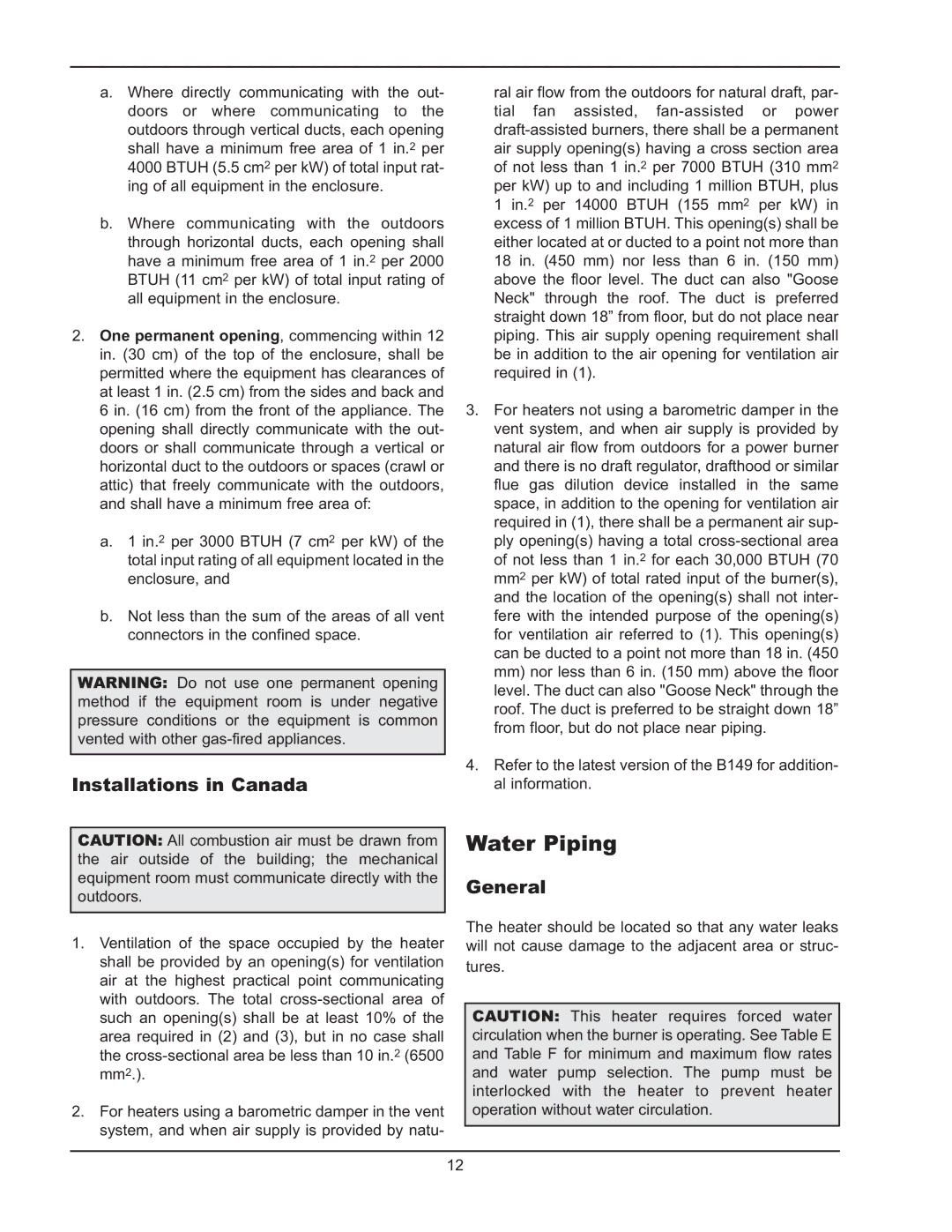HD101, HD401 specifications
Raypak is renowned for its commitment to high-quality heating solutions, with the HD101 and HD401 models standing out in their product range. These units are designed specifically for commercial applications, providing reliable and efficient hydronic heating systems. The HD series embodies innovation while addressing the unique demands of larger spaces.One of the main features of the HD101 and HD401 is their stainless steel construction, which ensures increased durability and resistance to corrosion. This design choice enhances the longevity of the units, making them ideal for various installations in commercial or industrial settings.
Both models are equipped with a high-efficiency heat exchanger that maximizes heat transfer while minimizing energy consumption. This feature is particularly significant in today’s environmentally conscious market, as it contributes to lower operating costs and reduced carbon footprints. The heat exchangers are engineered for easy maintenance, offering simplicity when service is required.
In terms of technology, the HD101 and HD401 include advanced digital controls that allow for precise temperature regulation. This user-friendly interface enables operators to easily manage and monitor heating parameters, facilitating optimal performance and energy management.
The models also feature modulating burners that adjust their output according to the heating demand. This capacity for modulation results in smoother operation and an overall increase in efficiency, as the burners can maintain consistent temperatures without excessive energy use.
Another noteworthy characteristic is their compatibility with various control systems, including BMS (Building Management Systems). This adaptability allows for seamless integration into existing infrastructure, providing users with greater versatility and control over their heating environments.
Both the HD101 and HD401 come with advanced safety features, including flame rollback protection and pressure monitoring, ensuring safe operation even in demanding conditions. Additionally, their compact design allows for easy installation in limited spaces while still providing powerful heating capabilities.
Ultimately, the Raypak HD101 and HD401 are exceptional choices for those in need of high-efficiency commercial heating solutions. With their robust construction, advanced technology, and user-friendly features, these models promise to deliver reliable performance and energy savings for years to come. Whether for a large facility or a specific industrial application, they stand ready to meet the heating challenges of today’s commercial landscape.

